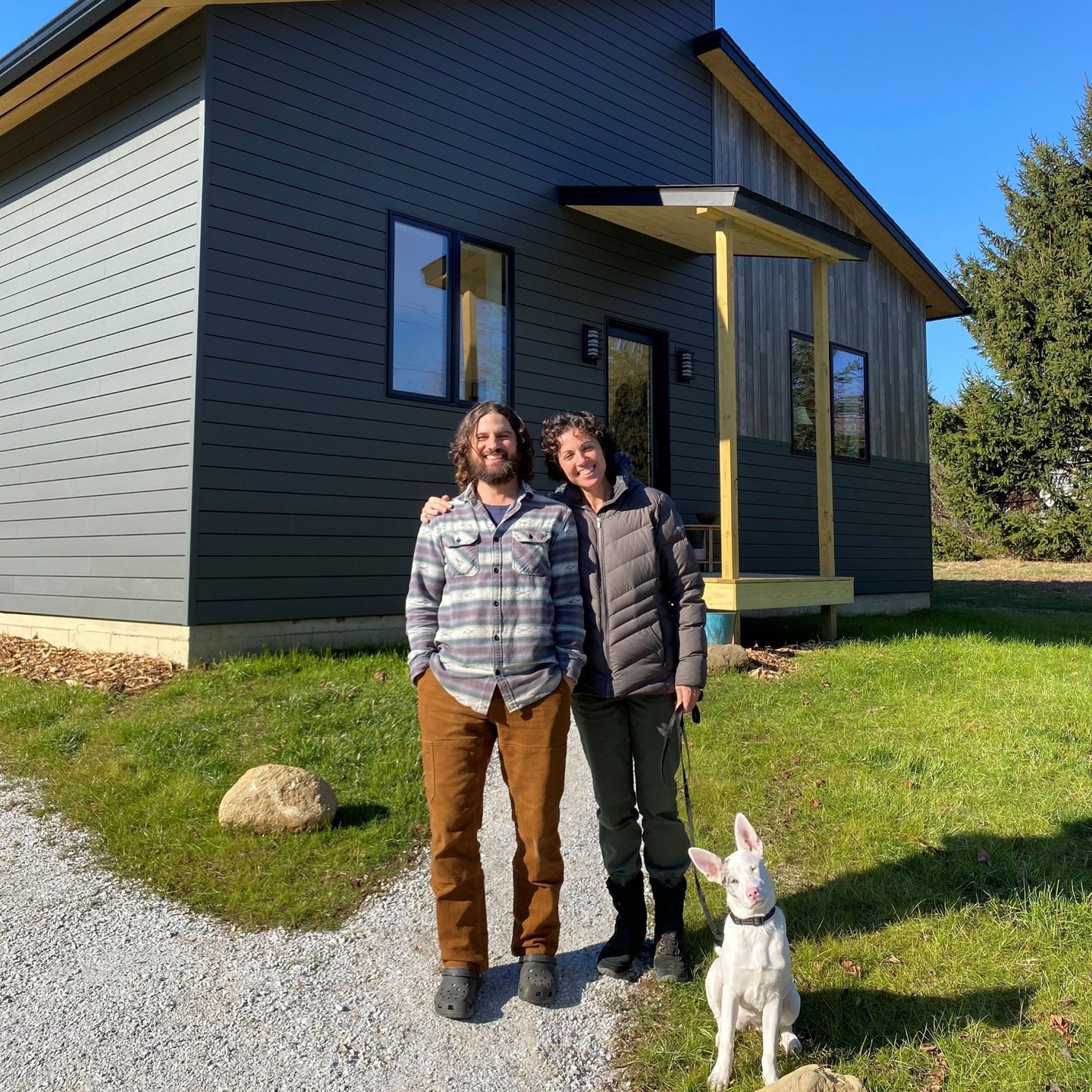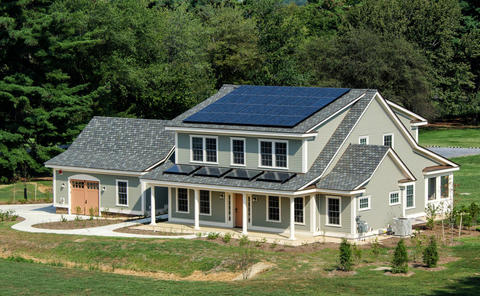
The window and door package for a new home is often one of the most expensive product purchases we make during a build. It’s always one of the most important.
Windows provide daylight and views. And they can make a house comfortable and efficient, or not-so-comfortable or efficient. If we don’t get it right the first time around our options are to live with cold spots in our room and wastefully high energy bills, or spend a lot of money to upgrade. The good news is that this is an easily avoidable problem, and that is where we start the show, with a short presentation on choosing windows based largely on the performance criteria found on the National Fenestration Rating Council’s window certification label.
After the presentation we drill down into the specifics of different window types, European windows vs. American products, wood and other frame materials, the carbon impact of windows, and more.
Our panelists are Russ Chapman, Steve Konstantino, and Joe Nickels—Russ is an architectural consultant for Sierra Pacific Windows where he works directly with the architectural and design community to help them best meet client expectations and goals; Steve is the founder and owner of Performance Building Supply and an expert in building science and renewable energy systems; and Joe is general manager of THRIVE Building Solutions which represents Alpen Windows & Doors.
Enjoy the show!
The next show is Thursday, July 23, from 6 to 7:30 pm: The state of the industry. Joins us and an all-star lineup of panelists for a look at the challenges and opportunities to move the building industry forward from improving your next project to encouraging the next generation of building professionals. Check out our panelists bios below and use this link to register for The BS* + Beer Show.
Carl Seville: From the Atlanta area, Carl is a recovered remodeler and green builder who is involved in speaking and education nationally throughout the building industry. Carl now runs SK Collaborative, a firm that consults on and provides green building certification for multifamily and single-family projects throughout the country. He blogs on GBA as the Green Building Curmudgeon, and contributes to JLC, and other building media outlets.
Chris Ermides: From upstate NY, Chris is an editor and producer of pro-level content for This Old House and has been involved in covering residential building as a journalist at Fine Homebuilding, Tools of the Trade, and beyond. Chris is also an experienced carpenter, builder, and remodeler.
Rob Yagid: Rob’s been around home building his entire life and was swinging a hammer in Connecticut when he was hired at Fine Homebuilding where he worked as an editor for many years and launched many of FHBs most successful initiatives include the Pro Home and the Keep Craft Alive program. Rob has moved on from FHB, but he is still the executive director of KCA.
Armando Cobo: Armando is a zero-energy custom home designer and building consultant experienced with the Zero Energy Ready Home program, The Building America Program, Build Green New Mexico, National Home Builders Association’s Green Building Program, and LEED for Homes, among others. He’s designed over 500 homes and built over 200 of them. Armando designs, teaches, trains and consults all over the country.
Phil Kaplan: Phil is an architect in Portland, Maine and principal at Kaplan Thompson Architects. Phil is also a speaker and educator, has a long-time involvement in NESEA, is a co-host of the Green Architects’ Lounge podcast, and has launched an offshoot of Kaplan Thompson architects, Bright Built Homes, focused on cost-effective, high-performance homes and off-site construction.
Brian Pontolilo is a former editor at Fine Homebuilding magazine and Green Building Advisor.
Weekly Newsletter
Get building science and energy efficiency advice, plus special offers, in your inbox.















7 Comments
Nice piece. I grew up with casement windows (circa late 1980's-early 1990's) and have been living with double hung for the past 20 yrs or so.
Casement windows were fantastic with regards to air sealing and of course the screens remained in better shape because they were on the interior of the window. The biggest draw back I experienced with casements has to do with the opening and closing. Air pressure can really make that a struggle and consequently adds a lot of wear-n-tear to the opening/closing mechanism.
Living in CZ 3 Double-hung. Circa 1999 windows and from my experience as a homeowner it's the easiest window to mount out of square. 23 windows in my home and almost every window has an install error.
Examples:
- Sill is not level leaving large gaps. I've wedged strips of foam between the sash and the interior portion of the sill.
- Top and bottom sash to not meet at a level plane allowing the window to be easily locked. I have windows there the bottom sash is either too high or too low. Obviously when this happens the gaskets can't do their job so it's a big air leak.
- Out of square windows. Almost all are out of square either at the bottom or the top.
- Exterior screens. The screens are anchored with clips into the bottom sill. My biggest gripe is that they trap dirt along the bottom sill and my sills are wood.
The vast majority of housing in CZ3 is built by production builders. I still see double hung but I can't remember the last time I didn't see one which has a beefed up gasket between the bottom and top sills. Of course codes have been updated so the code-min windows used today are higher performing than the windows in my current home. They still use exterior screens though.
Hi John.
Do you think double-hung windows are more difficult to install well or just more problematic when not installed well (or both)?
If you do feel they are actually more difficult to install well, I'd be curious to know why.
I don't have tons of experience installing windows, but I have installed fixed, casement, and double hung windows and while I'm always the most cautious when installing double hungs because their smooth operation relies so much on a square, level, and plumb install, I haven't notice the install to be inherently more difficult.
I wish I knew. I have zero experience with installing windows. My complaints are from a homeowners perspective.
Perhaps double-hung are more forgiving if your primary goal is just being able to make sure they can be opened? All of my windows can open but that comes with a laundry list of compromises. I've wondered if it was poor workmanship from the window supplier, a problem with the framers when they cut the rough-opening, or a combination of both. Back in 1999 production builders were trying to get their homes built and occupied within 2-3 months. They just did not give a damn.
John, do your double hungs have compression-style jamb liners? That style (formerly foam, now usually fins formed into the back side of the vinyl jamb liners) leaves the sashes with a lot of wiggle room. When I learned to install windows, part of the process was to open and close them a few times and carefully check the reveals. I have seen carpenters skip that step many times.
[John, do your double hungs have compression-style jamb liners?]
Yep
I still have yet to see a single/double hung window or sliding window get the same Air Infiltration ratings as a casement or tilt & turn window would. I think it's just the nature of the beast when it comes to design on the hung & sliding windows, they are just prone to leak air and sometimes water in heavy rainfall events.
Some builders get terrified if installing innie windows. They only know nailing fins and it's pretty hard to screw up a nail fin flange install. The innie window installs are not that hard but do require a little more time and being detailed in the install.
Peter, on a home I designed with mostly Marvin Integrity double-hung windows, the builder, Emerald Builders, was able to get to 0.4 ACH50. They taped the window frames before installation. They will very likely leak more over time, but will probably still stay below 0.6. They may have air-tested even tighter with casements, awnings or tilt-turns (on a subsequent home with tilt/turns they reached 0.12 ACH50).
Log in or create an account to post a comment.
Sign up Log in